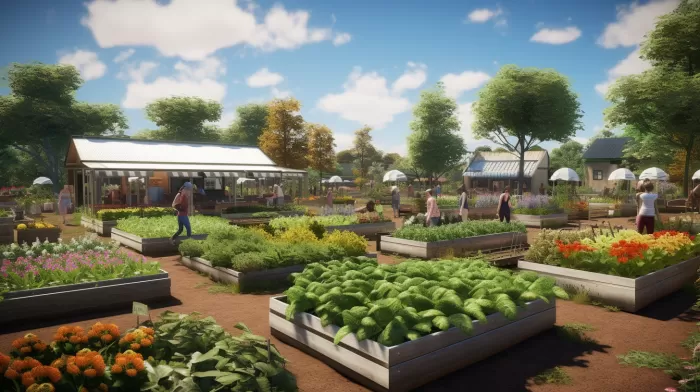Do you struggle to find fresh, healthy food options near you? The issue isn’t imaginary. Poor access to high-quality produce and other nutritious options sadly affects far too many people – and it’s not just a problem in low-income urban areas. This nutritional dilemma also impacts rural communities, who may not have a local store with fresh produce in sight.
But there is hope. According to Michelle Kaiser, a researcher at the University of Missouri, the key to increasing access to healthy food lies in locally produced options. Let’s dive deeper into her proposed strategies to support people of all incomes, regardless of where they live.
Community Supported Agriculture: A win-win for both consumers and farmers
One potential solution lies in Community Supported Agriculture (CSA). These programs allow you to purchase a share of a local farm’s harvest prior to the start of the growing season. This investment offers you a reliable supply of fresh produce, eggs, and meat throughout the season.
Not only do CSAs provide you with the freshest food possible, but they also benefit local farmers by offering financial stability and fostering a connection to their consumers. It’s encouraging to know where your food is coming from, and supporting local agriculture not only improves food security and access but also contributes to environmental sustainability.
Increasing the reach of farmer’s markets
Farmer’s markets have been a staple in communities around the world for decades. However, not all towns or cities have access to such markets. Kaiser notes that many farmers and vendors at these markets accept food stamps, ensuring that those in need can also gain access to fresh, locally sourced food options.
Establishing new farmer’s markets can only contribute positively to community well-being. In addition to increasing access to healthy food options, they also boost local economies by supporting small businesses and encouraging agriculture within the community.
Transforming vacant lots into thriving community gardens
Many urban areas have limited green space, and this affects the supply of fresh produce. One way to overcome this issue is by creating community gardens, which can transform underutilized spaces into a sanctuary for gardening enthusiasts.
These gardens not only provide access to nutrient-dense food but also create an environment where neighbors can learn from one another, share excess produce, and build connections. Moreover, gardening is an excellent way to stay active and engage in physical activity.
Identifying and addressing food availability issues through community food assessments
Some cities desperately need community food assessments, Kaiser said. These assessments help identify and address issues such as food availability, high prices, and transportation limitations.
By conducting community food assessments, city planners and community organizers can better understand the local food landscape and make informed decisions about implementing strategies like CSAs, farmer’s markets, and community gardens to ensure adequate access to healthy food options.
A sustainable food system benefits us all
We all deserve access to fresh, healthy, and affordable food options, regardless if we live in urban or rural areas. Investing in locally grown food is not only vital for our health – but also for the environment and the community’s economy.
Supporting your local farmers, encouraging the development of farmer’s markets, and participating in community gardens can make a significant difference in the availability of healthy food in your community. When you choose to invest in and support sustainable food solutions, you’re not just ensuring that you and your family eat healthily, but you’re also contributing to the overall wellbeing of your community. So, let’s roll up our sleeves, dig in, and be part of the change.



